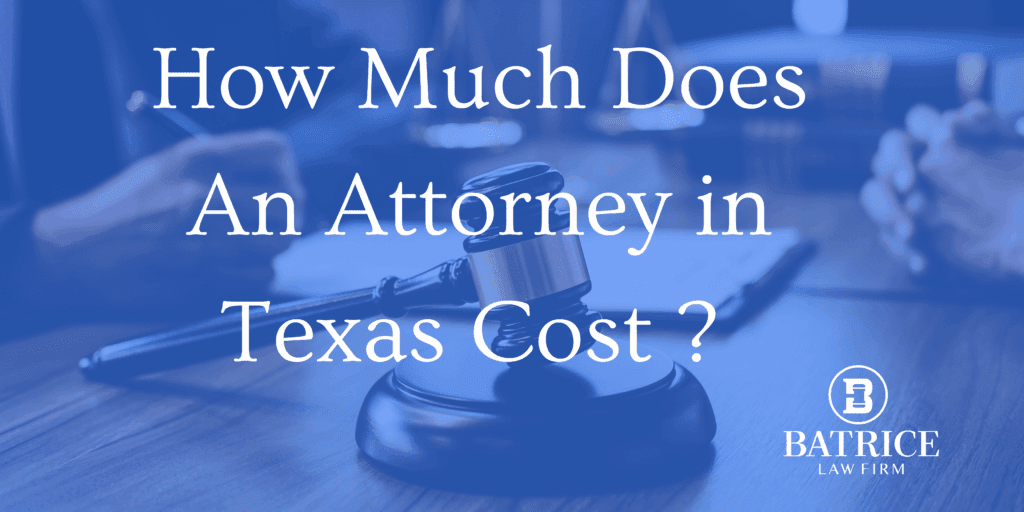Bicycle accidents can leave cyclists feeling vulnerable and overwhelmed, especially in a bustling city like Austin. It’s important to understand your rights and the steps you need to take following a cycling accident to ensure you receive the compensation you deserve.
First, ensure your safety and seek medical attention. Then, document the scene—take photos, note damages, and gather witness contact info. Texas law grants cyclists the same rights as motorists, and you have two years to file a claim. Under the 51% modified comparative fault rule, if you’re more than 50% at fault, you may be ineligible for damages.
Navigating the aftermath of a bicycle accident involves several key steps that can secure fair compensation for your injuries and damages. By being proactive and informed, you can effectively protect your legal rights and advocate for yourself in a challenging situation.
Key Highlights
- Document the accident scene right away. Take photos, note witness contacts, and gather vehicle information to create a solid foundation for your claim.
- Make sure to seek medical attention as soon as possible. Keep detailed records of all treatments, diagnoses, and expenses related to your injuries.
- File a police report and get in touch with your insurance company within 24 hours. It’s important to keep written records of all your communications.
- Preserve any damaged equipment and collect evidence of your financial losses, including medical bills and documentation of lost wages.
- Consider consulting an attorney within Texas’s two-year statute of limitations. This can help ensure your claim is filed properly and maximize your potential compensation.
Immediate Steps After a Bicycle Collision
A bicycle collision in Austin can turn a routine ride into a chaotic and stressful situation. Even minor injuries can have lasting effects, so it’s essential to follow a comprehensive medical checklist right away.
First and foremost, assess your injuries and contact emergency services, no matter how minor they may seem. Quick medical attention can prevent complications and ensure that you receive the right care. If you’re physically able to do so, move to a safe location away from traffic to avoid further risks. Visibility is key; activating hazard lights or using warning signals can alert other road users to the situation.
Make sure to obtain the license plate numbers of any vehicles involved in the incident. While waiting for help, take detailed photos of the accident scene to document evidence. Additionally, be aware that wrongful death claims may arise if the collision results in a fatality, impacting the deceased’s family members. Seeking the assistance of an experienced personal injury attorney can significantly enhance your chances of receiving fair compensation.
A well-organized response after a collision not only aids in your immediate recovery but also supports any future legal claims. Contact law enforcement to file an official report, and take steps to preserve the scene of the accident if possible. Avoid discussing fault with anyone involved; these conversations can complicate matters later. Collecting medical documentation at the scene can provide essential evidence, while timely communication with insurance companies helps create a clear and accurate timeline of events.
These initial actions are vital for establishing a solid foundation for both your health and any legal proceedings that may follow. Being prepared and knowledgeable can make a significant difference in navigating the aftermath of an accident.
Gathering Critical Evidence at the Accident Scene
Gathering evidence is more than just snapping a few photos; it requires a strategic approach. Begin with detailed photographic documentation that captures road conditions, vehicle positions, visible injuries, and any relevant traffic signals or signs. These images serve as critical evidence in reconstructing the accident and establishing fault.
Moving swiftly to a safe location first is essential before beginning evidence collection. Take clear photographs of any visible scrapes and bruises to document your injuries immediately after the accident. Additionally, insurance companies often aim to minimize costs, making thorough evidence collection even more crucial for your claim.
You should also be aware that collecting evidence promptly can significantly impact your compensation eligibility, as Texas imposes a two-year statute of limitations for personal injury lawsuits. Collecting contact information from all parties involved, as well as witnesses and bystanders, is vital.
Record essential details such as license plate numbers, insurance information, and specifics about the vehicles involved. Preserving physical evidence, such as damaged cycling gear, clothing, and bike components, can bolster your claim significantly.
Consider also the environmental factors; documenting the weather conditions, time of day, and GPS data can provide valuable context for understanding the circumstances surrounding the accident. If possible, seek out surveillance footage from nearby businesses, as this can offer irrefutable evidence to support your case. Furthermore, keeping a record of post-accident communications can strengthen your evidentiary foundation.
Understanding Your Legal Rights as a Cyclist
Under Texas law, bicycles are recognized as vehicles. This classification empowers cyclists with the same rights and responsibilities as motorists, enforcing the need to follow traffic regulations and safety protocols. Understanding these rights is essential, particularly in the event of an accident.
Cyclists injured due to another party’s negligence have the right to seek compensation for medical bills, lost wages, and property damage. In Texas, the 51% modified comparative fault rule comes into play, allowing cyclists to recover damages, albeit at a reduced amount proportional to their own level of fault. For instance, if a cyclist is found to be 20% at fault in an accident, their potential compensation would be decreased by that percentage. Seeking medical attention immediately after an accident is crucial for documenting injuries and establishing a strong legal case.
To build a strong case, cyclists must prove the other driver’s negligence, which involves demonstrating a breach of duty, causation, and the resultant damages. This can often hinge on gathering evidence, such as eyewitness accounts, traffic camera footage, or police reports. Cyclists are required to ride near the right of the roadway when traveling slower than normal traffic speed.
In addition to state laws, local ordinances in Austin bolster cyclist safety. For example, the city mandates specific passing distances for vehicles overtaking cyclists, requires minors to wear helmets, and prohibits the use of electronic devices while riding. These regulations not only enhance safety but also reinforce the legal protections available to cyclists navigating Austin’s streets.
For business owners who encourage cycling as a mode of transport for employees or clients, understanding these legal rights is crucial. It not only fosters a culture of safety but also mitigates potential liability issues. By being informed and proactive about the legal landscape, cyclists can enjoy their rides with greater peace of mind, knowing they have robust protections in place.
Medical Documentation and Treatment Records
Thorough medical documentation can significantly increase the chances of a successful claim. In fact, having comprehensive treatment records is not just beneficial; it’s essential for establishing a clear connection between the accident and your injuries.
Minor injuries documented immediately after an accident could later develop into serious conditions. A critical step is to exchange information with all parties involved before seeking treatment. That’s why it’s crucial for healthcare providers to meticulously record every aspect of your treatment, from the initial emergency response to the details of ongoing rehabilitation. This creates a robust timeline that reinforces the validity of your claim.
Treatment plans should be comprehensive, outlining specific therapies, medications, and expected recovery timelines. This not only demonstrates the full scope of medical intervention but also provides a clear picture of your recovery journey. For example, if a cyclist suffers a wrist injury, documentation should detail initial treatment, prescribed physical therapy, and any follow-up evaluations. Common injuries like road rash and fractures require extensive documentation to support potential compensation claims.
Moreover, obtaining documentation from multiple healthcare specialists can help illustrate the severity and potential long-term impact of your injuries. This multi-faceted approach strengthens your case, showing that your health and well-being were prioritized from various medical perspectives.
Key medical records should include diagnostic tests, imaging results, and professional opinions that explicitly connect your injuries to the accident. This level of detail is vital for calculating compensation accurately and validating the extent of damages suffered.
Filing Your Insurance Claim Properly
Once you’ve secured your medical documentation, the next step is to file your insurance claim accurately. This process involves submitting a comprehensive report to the insurance company of the at-fault driver, which should include essential documents such as police reports, photographs of the incident, and your medical records. In Texas, drivers must carry bodily injury liability insurance that provides minimum coverage of $30,000 per person and $60,000 per accident.
To streamline your claim, it’s vital to report the incident promptly and obtain a claim reference number. Providing the insurer with detailed evidence is key; this includes repair estimates for any damage to your bicycle, medical bills, and records of lost wages due to the accident. Using a structured checklist for self-evaluation can help ensure you haven’t overlooked any critical documentation. Additionally, understanding Texas fault laws is crucial, especially when liability is disputed. This knowledge can significantly impact the outcome of your claim.
In more complex situations, such as accidents involving underinsured motorists or those that occur while on the job, you may need to take extra steps. Keeping meticulous records of all communications with your insurer is essential—preferably in writing. If the at-fault driver’s insurance coverage is insufficient or if liability is contested, seeking legal counsel can be a prudent move.
Calculating Fair Compensation for Damages
To accurately assess compensation, several key elements come into play:
- Comprehensive medical documentation that outlines your treatment history and future care requirements.
- Employment records that substantiate your income loss and the impact on your career trajectory.
- Expert testimony that lends credence to claims of long-term disability.
- Detailed property damage evaluations for the replacement of your bicycle and any related equipment.
Insurance adjusters often employ a multiplier method to calculate compensation, typically ranging from 1.5 to 5 times the economic damages, depending on the severity of the injuries sustained. For instance, a minor injury may warrant a lower multiplier, while more severe injuries could justify a higher multiplier. Factors such as your age, pre-existing health conditions, and relevant case precedents also play a significant role in determining the final settlement amount.
It’s crucial to remember that policy limits could cap the total compensation available, which underscores the importance of meticulous documentation during the claims process. This preparation not only maximizes your potential recovery but also ensures that you are adequately supported as you navigate the challenges of recovery and rebuilding post-accident.
Determining Liability and Fault Percentages
Determining fault percentages in bicycle accident cases is crucial for establishing liability, and it can significantly impact the outcome of insurance claims and legal proceedings. In Texas, the modified comparative fault system plays a pivotal role in these disputes. It hinges on whether the cyclist’s contribution to the accident is more than 50%.
For instance, if a cyclist is injured while riding in a bike lane but was also found to be texting, the court will weigh both parties’ actions heavily. Driver behaviors such as distracted driving, failure to yield, or even aggressive maneuvers are critical factors, as are cyclist actions like riding against traffic or ignoring traffic signals.
Concrete evidence is paramount. Documentation such as skid marks, vehicle damage, and photos from the accident scene can construct a clear timeline of events. For example, a picture showing a cyclist in a bike lane right before being struck could support the cyclist’s claims of a driver’s negligence.
Courts and insurance companies carefully scrutinize adherence to traffic laws by both parties. They also consider situational factors, such as whether a vehicle was in a blind spot or if the driver was under the influence at the time of the accident. Medical records and expert testimony often become the linchpins in these cases, especially when narratives from the involved parties clash.
For business owners, being aware of these dynamics can significantly influence risk management strategies, liability insurance needs, and overall operational safety. If you find yourself facing a potential liability scenario, understanding these intricacies can help you make informed decisions moving forward.
Working With Insurance Adjusters Effectively
In the whirlwind that follows an accident, cyclists must maintain a strategic approach to ensure their rights and interests are protected. Here are essential protocols to guide you through the claims process:
- Meticulous Documentation: Keep detailed records of every interaction with insurance representatives, noting dates, times, and key conversation points. This information can be invaluable if disputes arise later.
- Caution with Statements: Be wary of requests for recorded statements. It’s advisable to consult with legal counsel before providing any comments that could be used against you.
- Stick to the Facts: Limit your communications to the essential facts of the accident. Avoid discussing fault or liability to prevent jeopardizing your claim.
- Gather Comprehensive Evidence: Collect extensive records of your injuries, including medical documentation and photographs from the accident scene. This evidence will strengthen your position during negotiations.
By maintaining a professional demeanor, exercising caution with your statements, and preserving thorough documentation, you can significantly improve your chances of achieving a fair resolution.
The road to recovery after a bicycle accident is not just about physical healing; it’s also about ensuring that you receive the compensation you deserve. With the right approach and preparation, you can confidently tackle the claims process and secure a fair outcome for your situation.
Meeting Texas Legal Filing Deadlines
When it comes to bicycle accidents in Texas, understanding the time limits for filing a claim is crucial for ensuring that your rights are protected. Texas has a strict two-year statute of limitations from the date of the accident for injured cyclists to pursue legal action. Missing this deadline can lead to the dismissal of your case, no matter how severe your injuries may be or how strong your claims are.
This timeline is particularly important for those who may feel overwhelmed after an accident. For instance, imagine a cyclist who suffers serious injuries and is unable to focus on legal proceedings right away. If they wait too long, they could lose their chance for justice due to the statute of limitations.
Fortunately, Texas law recognizes that certain populations require additional protections. For example, minors can breathe easier knowing that the filing deadline is paused until they turn 18, after which they have two years to file their claims. Similarly, individuals who are mentally incapacitated benefit from tolling provisions that suspend the statute of limitations until they regain their competency. These exceptions are designed to ensure fair access to justice for those who may not be in a position to advocate for themselves.
Given the complexities of these timing requirements and potential exceptions, it is critical for injured cyclists to seek legal counsel as soon as possible. An experienced attorney can help navigate the nuances of the law, ensuring that all necessary paperwork is filed within the required time frame, thus safeguarding your rights and increasing your chances for a favorable outcome.
Securing Professional Legal Representation
Once you have a grasp on the timelines involved, choosing the right bicycle accident attorney is crucial. An attorney with extensive experience in bicycle accidents can provide invaluable insights into negligence standards and accurately assess the full extent of your damages. They will spearhead thorough investigations, meticulously gather evidence, and craft effective negotiation strategies with insurance companies on your behalf.
Key elements of effective legal representation include:
- Conducting comprehensive accident scene investigations and preserving crucial evidence, such as video footage and eyewitness accounts
- Collaborating with medical experts and accident reconstruction specialists to build a robust case
- Strategically documenting all damages, including projected medical expenses and income loss
- Formulating compelling liability arguments grounded in Texas traffic laws
By securing professional representation, you ensure that your claim is valued appropriately through precise damage assessments and coordinated expert testimonies. This systematic approach is not just about maximizing compensation; it also safeguards your legal rights throughout the claims process.
For instance, consider the case of a cyclist who suffered a severe injury due to a driver’s negligence. With the help of a skilled attorney, they were able to gather video evidence, consult with medical experts, and present a compelling case that secured a settlement significantly higher than what they might have received without legal assistance.
Ultimately, the right legal representation can make a substantial difference in the outcome of your claim, providing you with peace of mind during a challenging time and ensuring that you are fully compensated for your losses.
In Summary
Steering bicycle accident claims in Austin necessitate a careful and thorough approach to ensure all evidence is properly documented. This includes recording details like skid marks and preserving any relevant information that could support the case.
Gathering extensive medical records and adhering to legal deadlines are vital steps in building a strong claim for compensation. With the right legal representation, such as Batrice Law Firm, cyclists can navigate the complexities of their cases and pursue the justice they deserve.
At Batrice Law Firm, we pride ourselves on being the premier personal injury attorneys in Austin, Texas, dedicated to helping clients with their bicycle accident claims. Our experienced team understands the intricacies involved in these cases and is committed to providing personalized support throughout the process.
We recognize the importance of meticulous documentation and strategic planning in achieving favorable outcomes for our clients. Let us help you turn your challenging situation into a path toward justice and compensation with our expert legal guidance.




